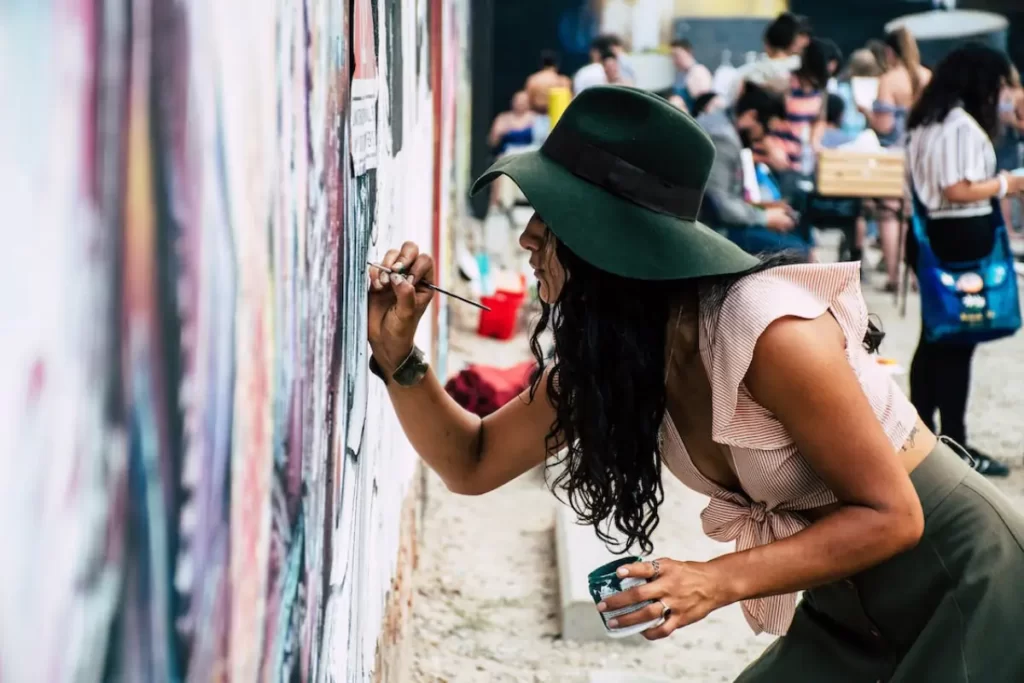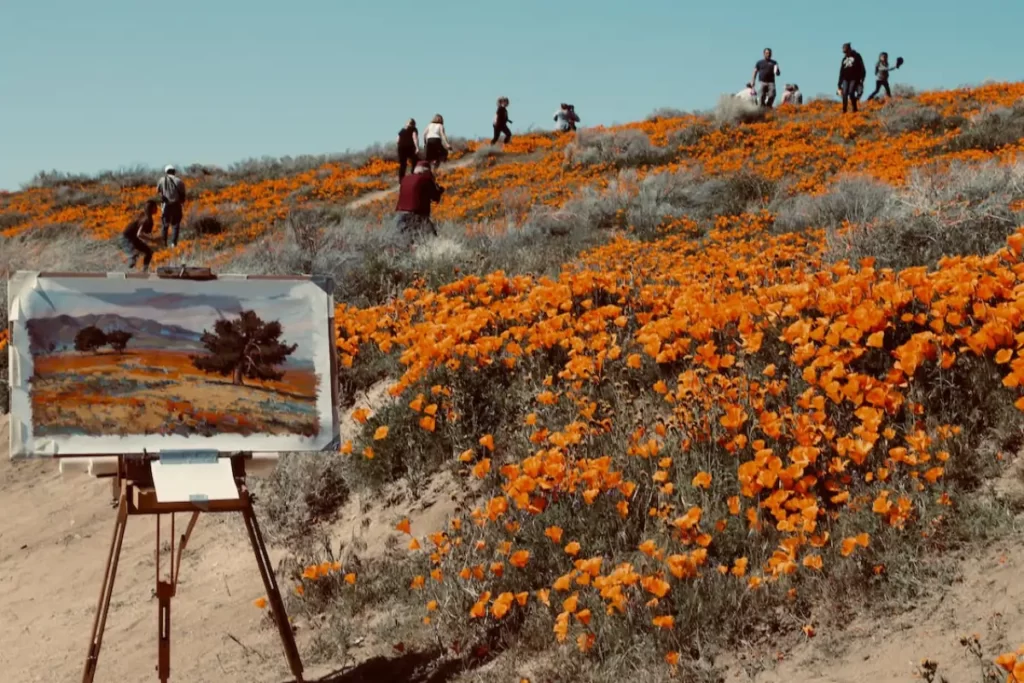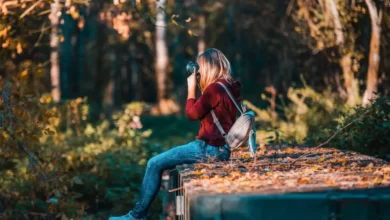Immersing oneself in outdoor painting, enables you to explore the joys it brings, the techniques to master, and the beauty of capturing scenic landscapes on canvas. That is where art and nature collide to create breathtaking masterpieces. Whether you’re a seasoned artist or a novice looking to unleash your creativity, this article inspire you to grab your easel, brushes, and paints and head outdoors to create art that reflects the wonders of the world around you.
1. The Pleasure of Outdoor Painting
There’s something magical about setting up your easel under the open sky, surrounded by the sights and sounds of nature. Outdoor painting offers a unique experience that transcends the confines of a studio. The changing light, the rustle of leaves, and the subtle shifts in the atmosphere become integral parts of your creative process. It’s a sensory journey that enhances not just your artistic abilities but also your connection to the environment.
Connecting with Nature
When you step outside with your easel and paints, you are not just setting up a studio; you are entering into a dialogue with nature. The rustling leaves, the fragrance of blooming flowers, the gentle breeze – these become integral components of your creative process. The act of painting outdoors transcends the conventional boundaries of art; it becomes a sensory journey that engages not only your eyes and hands but your entire being.
Dynamic Lighting and Atmosphere
One of the most enchanting aspects of outdoor painting is the ever-changing play of light and shadow. Unlike a controlled studio environment, where artificial lighting remains constant, outdoor settings offer dynamic lighting conditions that evolve with the time of day and weather. The challenge and pleasure lie in capturing these nuances on your canvas – the soft glow of dawn, the harsh brilliance of noon, or the warm hues of a sunset. Each stroke becomes a dance with the changing atmosphere, resulting in a piece that not only portrays a scene but also encapsulates a moment in time.
Freedom and Creativity Unleashed

Outdoor painting liberates artists from the constraints of four walls, allowing them to break free from the confines of a studio. The expansive landscapes, intricate details, and unexpected elements offer an endless playground for creativity. The freedom to choose any subject that captures your imagination – whether it’s a quaint village, a bustling cityscape, or the serenity of a mountain lake – contributes to the joy of the artistic process.
Immersive Experience
Setting up your easel outdoors is an immersive experience that encourages mindfulness and presence. The act of observing and translating the beauty around you onto a canvas becomes a form of meditation. The sounds of nature, the feel of the breeze, and the scent of the earth infuse your work with a unique energy that is impossible to replicate within the controlled walls of a studio.
Connection with the Elements
Outdoor painting fosters a deep connection with the elements. Whether you find yourself perched on a hill, nestled in a forest, or by the shore of a tranquil lake, your surroundings become an integral part of your artistic expression. The wind may carry a hint of salt, the sunlight may warm your skin, and the sounds of nature may compose the soundtrack to your creative journey. This elemental connection adds layers of authenticity to your artwork, making it a true reflection of both the external landscape and your internal experience.
2. Essential Outdoor Painting Supplies
Before you embark on your outdoor painting adventure, ensure you have the right tools at your disposal. Here’s a checklist to get you started:
Portable Easel: Invest in a lightweight, sturdy easel that’s easy to set up and carry.
Quality Brushes: Bring a variety of brushes suitable for different strokes and details.
Canvas or Paper: Choose a surface that suits your preferred medium, whether it’s oils, acrylics, or watercolors.
Palette and Palette Knife: A palette for mixing colors and a palette knife for applying and blending.
Paints: Pack a selection of colors, focusing on the hues prevalent in the outdoor scene you plan to paint.
Portable Chair or Stool: Stay comfortable during your painting sessions.
Sunscreen and Hat: Protect yourself from the sun’s rays, especially during prolonged outdoor sessions.
Water and Snacks: Stay hydrated and energized to keep your creativity flowing.
Techniques for Outdoor Painting
Now that you’re equipped with the right supplies, let’s explore some essential techniques to make the most of your outdoor painting sessions:
1. Quick Sketching: Start with a rough sketch to capture the basic elements and composition of the scene.
2. Focus on Light and Shadow: Pay close attention to how light interacts with your surroundings. Emphasize shadows and highlights to add depth to your painting.
3. Color Mixing: Experiment with color mixing to create vibrant and realistic hues. The outdoor environment offers a rich palette of colors that may differ from studio lighting.
4. Impressionistic Approach: Embrace the spontaneity of outdoor painting by adopting an impressionistic style. Capture the essence of the scene with loose, expressive brushstrokes.
5. Weather and Atmosphere: Incorporate weather conditions and atmospheric elements into your paintings. A cloudy sky, a gentle breeze, or the warmth of sunlight can dramatically influence the mood of your artwork.
Finding Inspiration in Nature

One of the most rewarding aspects of outdoor painting is the abundance of inspiration that surrounds you. Whether you’re in a bustling urban park or a serene countryside setting, nature offers a wealth of subjects waiting to be translated onto your canvas. Consider the following ideas:
Sunrise or Sunset Scenes: Capture the breathtaking colors of the sky during the golden hours.
Water Reflections: Paint the tranquility of lakes, rivers, or ponds with reflections dancing on the water’s surface.
Floral Gardens: Explore the vibrant colors and textures of flowers in a botanical garden.
Urban Landscapes: Find beauty in the architecture and energy of a cityscape.
Seascapes: Head to the coast and paint the ever-changing moods of the sea.
Overcoming Challenges of Outdoor Painting
While outdoor painting is a rewarding endeavor, it does come with its challenges. Here are some common obstacles and tips on overcoming them:
Changing Light: The position of the sun affects shadows and colors. Consider working on smaller studies or capturing the scene in stages.
Weather Conditions: Be prepared for unexpected weather changes. A rain cover for your easel and plastic sheets to protect your artwork can be lifesavers.
Distractions: Outdoor environments can be bustling with activity. Find a quiet spot, or embrace the energy around you and incorporate it into your artwork.
Limited Time: The natural light you’re working with is constantly changing. Prioritize your composition and work efficiently to capture the essence of the scene.
Conclusion
Outdoor painting is not just a creative outlet; it’s a journey of self-discovery and a celebration of the beauty that surrounds us. Whether you’re a casual painter or a dedicated artist, the experience of translating the outdoor world onto canvas is a gratifying endeavor. So, pack your art supplies, venture into nature, and let the landscape be your muse as you embark on a fulfilling artistic adventure.









